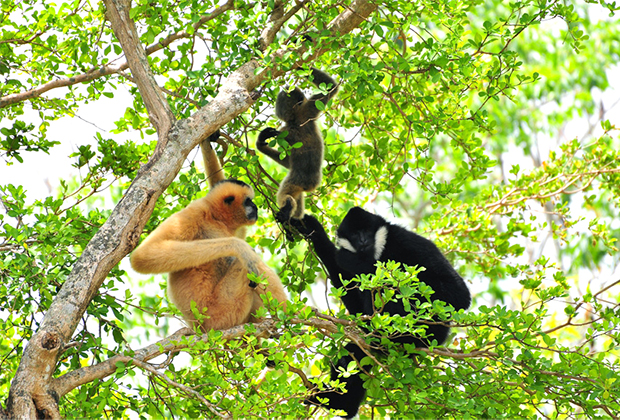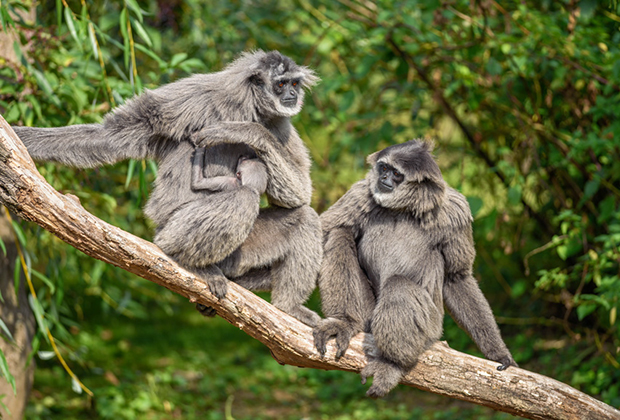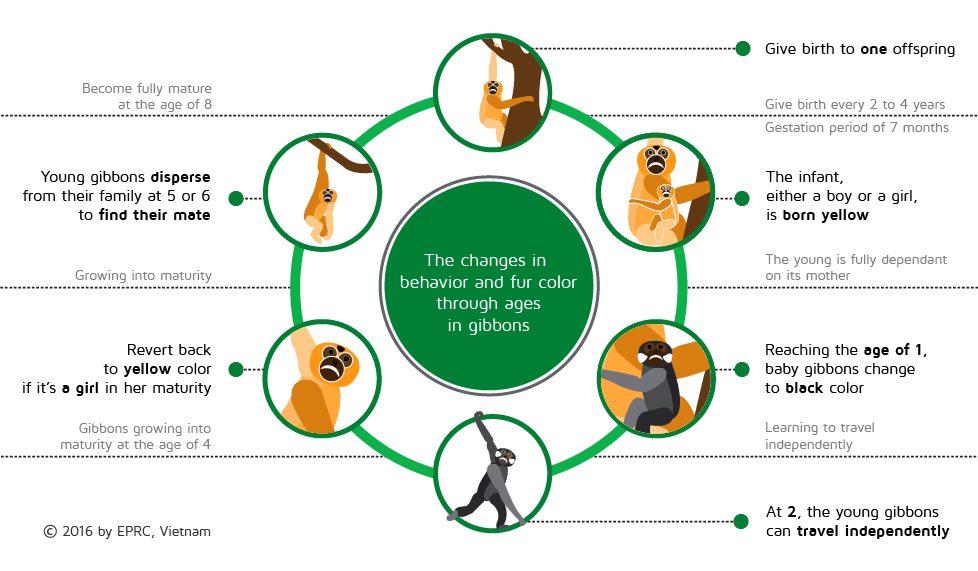(Visited 14,570 times, 3 visits today)
The family historically contained one genus, but now is split into four genera and 18 species.


Gibbons seems to receive far less attention than the other members of the ape family, but it doesn’t mean gibbons are not worth protecting.
The smallest of the apes, gibbons are often referred to as ‘lesser apes’. They are found only in the Indo-Malayan region, extending from India and China, down through mainland Southeast Asia and into Indonesia. Living in small family groups, gibbons are mostly monogamous. The pair will often stay together for life, defending a patch of forest that provides for all of their needs, and raising their young, with up to four offspring remaining with the family at any one time.
Acrobats of the forest, a gibbons long arms and compact body are perfectly adapted for life in the trees, so they need never come to the ground and generally live an entirely arboreal existence. So well adapted to life in the canopy, they are capable of performing leaps between trees of up to 12 meter and brachiating at speeds of up to 56 Kilometer per hour.
Gibbons communicate with a wide repertoire of vocalizations, but are best known for their hauntingly beautiful song; males and females sing together in a duet that is unique to each species. They are relatively slow breeders, giving birth to only one offspring every 3-4 years, and baby gibbons remain fully dependent on their mother for around 12 months. By the age of 2 years, they begin to move independently from their mother. A young gibbon has a lot to learn, and stays with its parents until around 5-6 years of age, reaching full maturity at around 8 years. Gibbons eat mainly fruit and supplement this diet with leaves and insects.
There are currently 4 genera and 19 species of gibbons recognized throughout their range. In Vietnam, we have 6 of the 7 species in the genus Nomascus, otherwise known as the crested gibbons. Crested gibbons are similar in size, averaging around 60 centimeter head-body length and 7.5 kilogram in weight. They are distinct from the other gibbon groups by the obvious crest of fur on the crown of males, and their coloration, with males being black with white or orange cheeks and females being golden. All the crested gibbons are born yellow, but change color with age.
See the diagram below for the color and behavior change with age in crested gibbons.

Being almost exclusively arboreal, gibbons are fully dependent on intact forests. When these forests are fragmented, gibbon populations decline due to lack of food, social opportunities and gene flow. In addition, fragmented forests allow easier access, exposing already declining gibbon populations to illegal hunting. An arboreal fruit eater, these increasingly rare primates play a key role as seed dispersers in the Indomalayan forests. Their decline in these forests will undoubtedly impact on the biodiversity and the ability of the forests to regenerate.

Established in 1993, EPRC is a not for profit project dedicated to the rescue, rehabilitation, breeding, research and conservation of Vietnam’s endangered and critically endangered primate species.
© Endangered Primate Rescue Center 2020
Website by MINIMUMMEANS